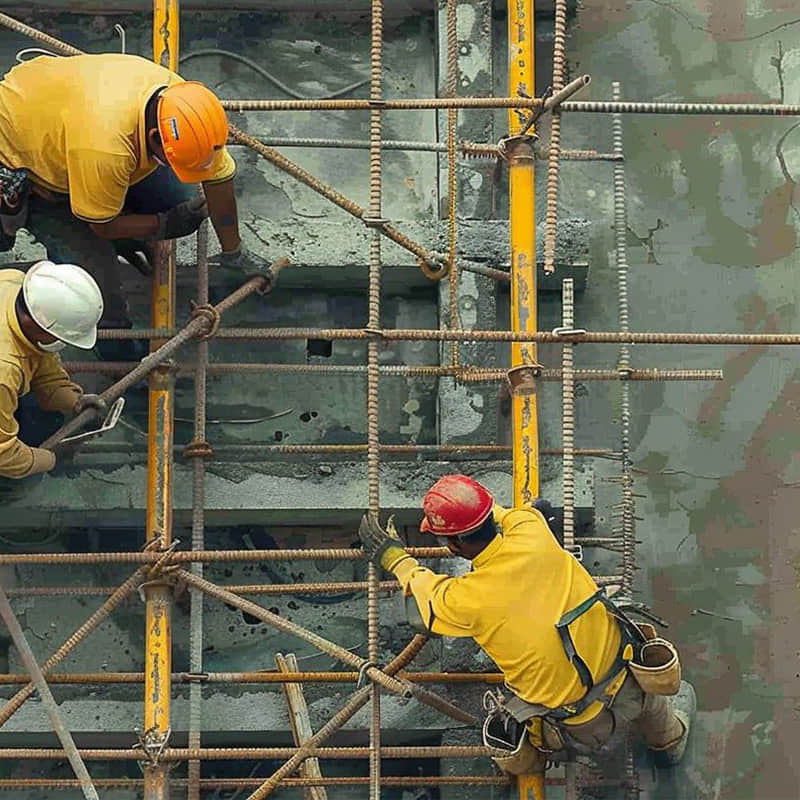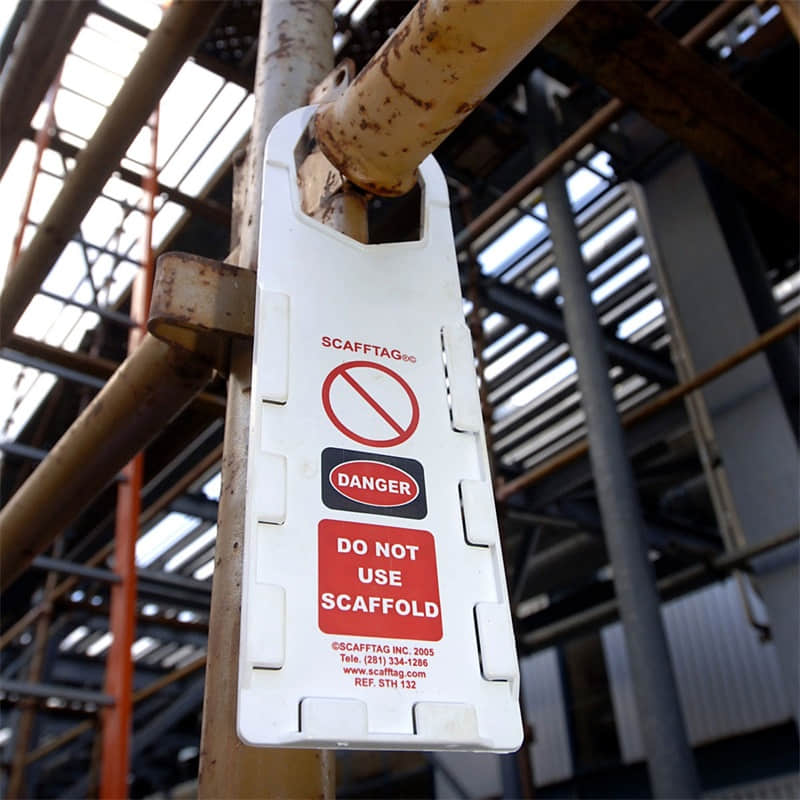What Should Be Confirmed Before Climbing On A Scaffold?
Apr 12, 2025
Climbing a scaffold is a common, yet essentially dangerous, activity for an employee in industries like construction, renovation, and industrial maintenance work. Scaffolds are necessary for elevated access work, but they can be the cause of serious accidents (falls, collapses, or electrical events) if workers are unaware of their surroundings, do not inspect the scaffold or site before climbing, or do not take other necessary precautions. Complete background checks need to take place prior to any worker stepping onto a scaffold to ensure safety and that work activity is performed effectively. The comprehensive guide below combines important safety information with actions taken to create a thorough checklist for workers, supervisors, or site managers on the day of work. Let’s take a deeper look at what you need to check to ensure a scaffold is a safe workspace.
The Importance of Pre-Climb Checks
Scaffolds are temporary structures that are constructed to support workers and materials at elevations, but these transient structure exposes them to neglect. According to the Occupational Safety and Health Administration (OSHA), falls from scaffolds are one of the most prevalent causes of workplace injuries, often the result of insufficient planning ahead of time or if hazards were simply not recognized. Confirming the essential safety elements before climbing a scaffold can ultimately save lives while conforming to regulations and maintaining the momentum of the project. What do I have to check? Below is a complete listing of what steps to take.
Crucial Safety Inspections Before Scaffolding
Safety starts with a proper assessment of the scaffold, its environment and individuals on or around it. Below we take a closer look at what to inspect:
1. Foundation and Structural Integrity
A scaffold is only as strong as its base. Verify the following:
Footings and Base Plates: Are they firm, level, and capable of supporting the maximum intended load? Is the foundation free from pooling water or excessive debris?
Mud Sills/Sole Plates: Are sole plates correctly sized, sound, and positioned directly beneath the base plates to distribute the load evenly?
Plumb and Level: Is the scaffold frame vertical (plumb) and horizontal (level)? Deviations severely compromise stability.
Bracing (Cross & Diagonal): Are all necessary cross-bracing and diagonal bracing components securely attached? Are there any missing, loose, or damaged components?
2. Anchorage and Tying
Ties secure the scaffold to the permanent structure, preventing collapse and sway.
Ties/Anchors: Are they installed at the correct vertical and horizontal intervals as specified by the manufacturer and a competent person?
Tie Material: Are the ties and anchors appropriate for the structure and free from signs of degradation or damage?
Non-Load-Bearing Structures: Have ties been deliberately avoided on non-load-bearing elements (e.g., falsework, temporary piping)?
3. Work Platform and Decking
The walking surface must be secure, complete, and safe.
Full Decking: Is the work platform fully planked or decked with no gaps greater than one inch (2.5 cm)?
Plank Overhang: Do scaffold planks extend over their end supports by at least 6 inches, but no more than 12 inches?
Damage Check: Are all planks/decks free of excessive paint, knots, splits, or warping that could affect their load rating?
Cleanliness: Is the platform clear of tripping hazards (e.g., tools, materials, debris, ice)?
4. Guardrails and Fall Protection
Effective guardrails are the primary defense against falls.
Guardrail System: Are the top rails installed at a height between 38 and 45 inches?
Mid-rails: Are mid-rails installed halfway between the top-rail and the platform surface?
Toeboards: Are toeboards installed along the edge of the platform to prevent tools and materials from falling below?
Rail Integrity: Are all guardrails and their supports capable of withstanding a force of at least 200 pounds applied horizontally or downward?
5. Secure Access and Walkways
Ladder Condition: Inspect ladders for damage, which includes bent rungs, or loose bolts. If they are portable ladders they must be secured to the scaffold, and extended a minimum of 3 feet over the work platform to give workers a way to ravel securely up and down.
Ladder Placement: Set ladders at a 4:1 ratio (1 foot out for every 4 feet of height) to lessen the risk of tipping ladders. Never use ladders on unstable surfaces, such as, mud or gravel.
Clear Pathways: If the scaffold is drivable, make sure the path to its final destination is clear of any obstructions - debris, tools, or uneven ground - that would obstruct movement or lead to tripping. Make sure to inspect around all access areas for hazards.
Responsible Climbing: Do not climb on the scaffold frame or cross-bracing; use the proper ladder or the proper stairs. Inform workers to go up and down slowly and to maintain three points of contact (two hands, one foot or the other way around).
6. Ground and Environmental Conditions
Ground Stability: Check that the ground the scaffold rests on is solid, level, and capable of bearing its weight. Soft soil, sandy areas, or waterlogged areas may need to have base plates or additional support. Qualified personnel should be in close proximity to monitor the ground, especially after rain.
Weather Conditions: Verify what the forecast is and what the current weather says. Conditions such as winds (greater than 25-30 mph winds, depending on local regulations), heavy rain, ice, or lightning create unsafe conditions to do work with scaffolding. If conditions become unsafe, cease work. If work is to be done in lower light conditions (dawn or dusk), there needs to be adequate lighting to work.
Distance from Hazards: Always maintain a safe distance from traffic or other activities that could impact the scaffold with vehicles, heavy machinery, or site activities that could penetrate or destabilize the scaffolding. If these areas need to be marked off, do so.
7. Electrical Safety Precautions
Power Line Location: If scaffolding is near overhead power lines, use only nonconductive or composite (fiberglass) scaffolding. Maintain a minimum distance (typically 10 feet, per OSHA) from live wires.
Ground Fault Protection: Use tools and equipment that are all grounded, or use ground fault circuit interrupters (GFCI). Use GFCI to cut off power in case of a fault. Test them before beginning work.
8. Personal Protective Equipment (PPE)
Fall Protection: For heights above 6-10 feet (per local rules), wear a full-body harness with a lanyard attached to a secure anchor point on the scaffold. Test the fit and connections before climbing.
Footwear: Use non-slip, steel-toe boots to protect against slips and falling objects. Check soles for wear that could reduce traction.
Helmet: Wear a hard hat to shield against head injuries from dropped tools or debris. Ensure it’s snug and undamaged.
Additional Gear: Depending on the job, consider gloves, safety glasses, or high-visibility clothing for added protection.
The Importance of the Green Tag
The most visible sign that a pre-climb inspection has been successfully completed is the Scaffold Tagging System.
Green Tag (Safe): Signifies the scaffold is complete, inspected by a competent person, and safe for use. This is what the pre-climb inspection confirms.
Yellow Tag (Caution/Restricted): Indicates the scaffold is still in use, but requires specific PPE (e.g., fall arrest systems) or has minor, acceptable deviations.
Red Tag (Unsafe): Signifies the scaffold is incomplete, damaged, or otherwise unsafe. DO NOT CLIMB.
Actionable Advice: Workers must be trained to always check the tag before climbing. If the tag is missing or indicates "Red," they must immediately report it and use alternative access.
A Final Checklist
Before climbing a scaffold, run through this comprehensive checklist: Is the structure stable, properly assembled, and tagged as safe? Are brakes locked, load limits respected, and access points secure? Have you assessed the ground, weather, and nearby hazards like power lines or traffic? Are you equipped with the right PPE, trained for the task, and backed by an emergency plan? If any answer is “no,” pause and resolve the issue.
Safety isn’t a one-time check. By confirming these factors, you safeguard yourself, your team, and your project’s success. Approach every scaffold with diligence, and make safety your foundation for working at height.
FAQ
Can I climb a scaffold if something seems off?
No. If you notice issues—like a missing guardrail, a red tag, or unsafe weather—report them to a supervisor and wait for resolution. Safety always comes first.
How does knowing regulations help with scaffold safety?
Understanding standards like OSHA’s 29 CFR 1926 Subpart L or HSE guidelines ensures you follow best practices for setup, inspection, and use. Compliance reduces risks, avoids fines, and promotes a culture of safety on-site.
Read More
Mast Climbers - Scaffolding eTool —— OSHA
Fall Protection-Scaffolds/Elevated Work Platforms— UCOP

